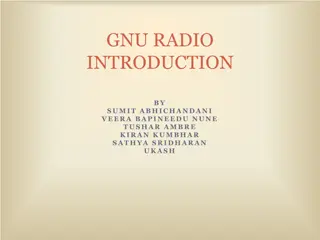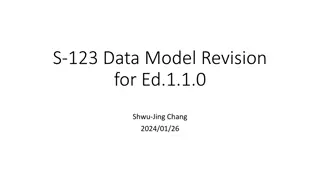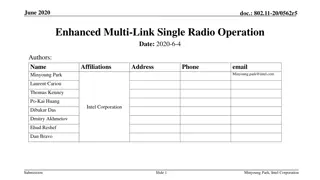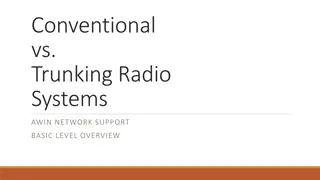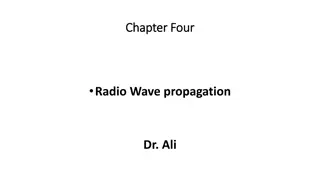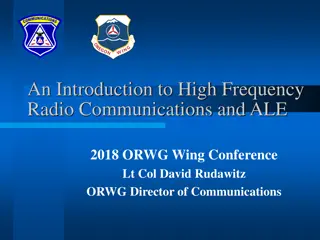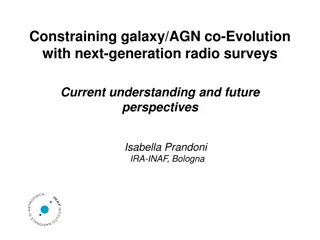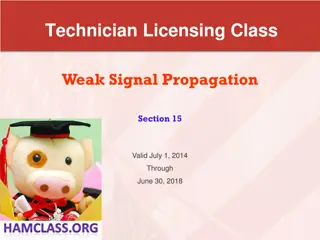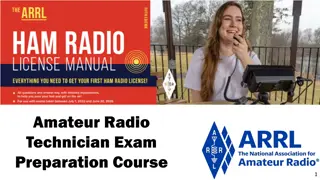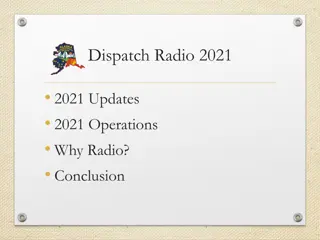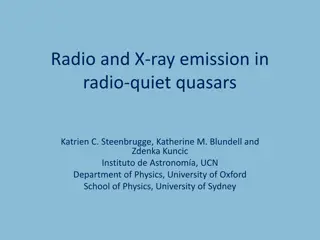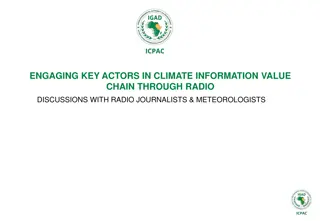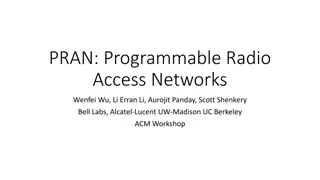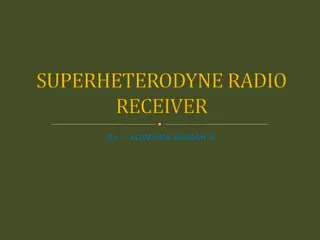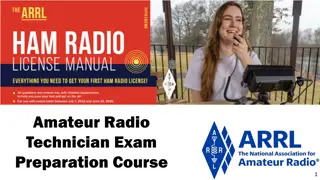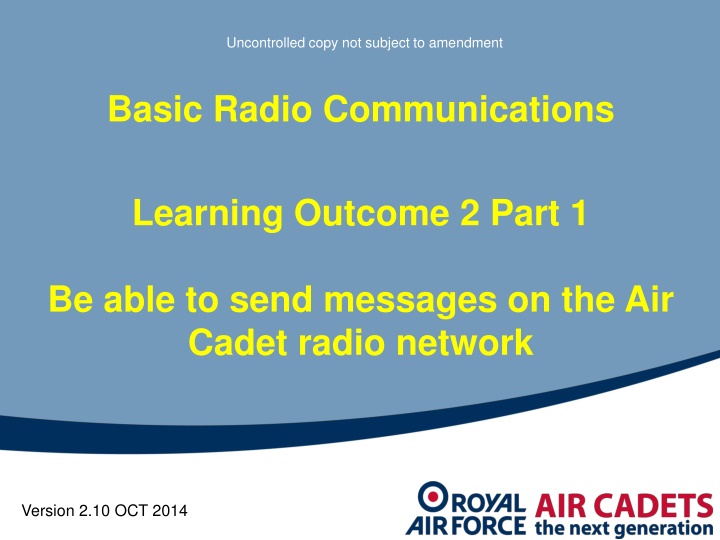
Radio Communications Procedures for Air Cadets - Learning Outcomes
Master the essential radio communication procedures for Air Cadets. Learn about callsigns, security protocols, and how to send messages effectively on the Air Cadet radio network.
Download Presentation

Please find below an Image/Link to download the presentation.
The content on the website is provided AS IS for your information and personal use only. It may not be sold, licensed, or shared on other websites without obtaining consent from the author. If you encounter any issues during the download, it is possible that the publisher has removed the file from their server.
You are allowed to download the files provided on this website for personal or commercial use, subject to the condition that they are used lawfully. All files are the property of their respective owners.
The content on the website is provided AS IS for your information and personal use only. It may not be sold, licensed, or shared on other websites without obtaining consent from the author.
E N D
Presentation Transcript
Uncontrolled copy not subject to amendment Basic Radio Communications Learning Outcome 2 Part 1 Be able to send messages on the Air Cadet radio network Version 2.10 OCT 2014
Radio Procedures S A D ECURITY CCURACY ISCIPLINE
Callsigns MRA 23 M R A 23 Callsign allocated to the UK Associated with the RAF Indicates geographical location Serial number issued by HQ AC Issued by local unit MRA 23 A1
Main Station Callsign This is given using the phonetic alphabet So, the Main Station Callsign MRA 99: Mike Romeo Alpha Nine Nine is pronounced Mike Romeo Alpha Nine-er Nine-er
Non Main Station Callsign This is used away from the Main Station The local unit should add either: One alpha character One alpha character and one number Two alpha characters AC and CC should be avoided
Non Main Station Callsign examples MRA 99 A MRA 99 B MRA 99 G MRA 99 X MRA 99 A1 MRA 99 A2 MRA 99 B9 MRA 99 Y1 MRA 99 AA MRA 99 AB MRA 99 BG MRA 99 PQ Reminder: The combination of AC and CC should be avoided
Abbreviated Callsigns These are used for: The ease of sending To speed up sending Used when instructed Abbreviated Callsigns should not be used: If conditions are poor If there is a risk of duplication
Security The Sender The Listeners The Interceptors
Security Never Use unauthorised codenames Use personal names or nicknames Use slang or jargon Transmit aircraft types, roles or weapon loads in clear speech Transmit details of arms or ammunition and particularly their movement Transmit unit locations in clear speech
Security Always Use your callsign at the start of a transmission Use only authorised appointment titles Ask a station to authenticate if you think it may not be genuine
Security Authentication Is a way to help protect your communications How to do this is described later
Security Additional aids to security Codes Appointment Titles Veiled Speech
Accuracy Before transmitting Listen and check that you can not hear another station Know how to use microphone Keep hands away from the front of the microphone Hold the microphone 50 mm from your mouth ready to speak across it Do not hold the boom of a head set or desk microphone
Accuracy Whilst transmitting Speak clearly and distinctly Pause before and after numbers Avoid hesitations such as er or um Only press the PTT button when ready Do not release PTT until you have finished speaking When finished check that the PTT button has released correctly
Accuracy R Rhythm S Speed V Volume P Pitch
Prowords THIS IS The callsign of the sender follows OVER This is the end of my present transmission A reply is required OUT This is the end of my transmission No reply is expected
Prowords WAIT OUT Your transmission has been received A reply will follow later WILCO Message received, understood I will comply with your instructions ROGER I have received your last transmission
Prowords SAY AGAIN Request for repetition of all or part of a message I SPELL I shall spell the next word MESSAGE The transmission to follow will need to be written down
Prowords FIGURES Used before groups of numbers sent digit by digit GRID Used before grid reference are sent in clear speech SPEAK SLOWER Transmit at a slower speed TIME The following group is a time group, or a date/time group
Prowords UNKNOWN STATION CORRECT Used when calling a Station whose identity is not known You are correct, or what you have transmitted is correct WRONG Your last transmission was incorrect The correct version is...
Phonetics Phonetics are used: When reception is poor The signal is weak There is high background noise Words are difficult to pronounce The operator has a strong accent
Phonetics Letter A Word Alpha Pronunciation Al - Fah B Bravo Brah - Voh C Charlie Char - Lee D Delta Del - Tah
Phonetics Other examples: Letter M Word Mike Pronunciation Mike R Romeo Row - Mee - Oh V Victor Vik - Tah There is a full list in the separate Self Teach Presentation
Map References The Proword Grid precedes a Grid Ref Example: TQ 123 456 This should be sent as follows: (short pause) GRID (short pause) Tango Quebec (short pause) Wun Too Tree Fower Fife Six When sending Grid References they should be sent more slowly than normal
Time Time is preceded by the Proword Time and is given using the 24-hour clock Example: 1340 Hours This should be sent as follows (short pause) Time (short pause) Wun Tree Fower Zero
Discipline ALWAYS Use correct voice operating procedure Maintain a constant radio listening watch Ensure correct channel/frequency is selected Answer all your calls correctly Think before transmitting and make sure you know your message Release the PTT switch as soon as you have finished speaking and ensure the set returns to receive
Discipline NEVER Compromise classified information by using plain language Make unnecessary, over long or unofficial transmissions Identify yourself or your unit by name Swear or lose your temper
Discipline NEVER Disclose frequencies Give telephone numbers or addresses Personal details about yourself or others Play music

